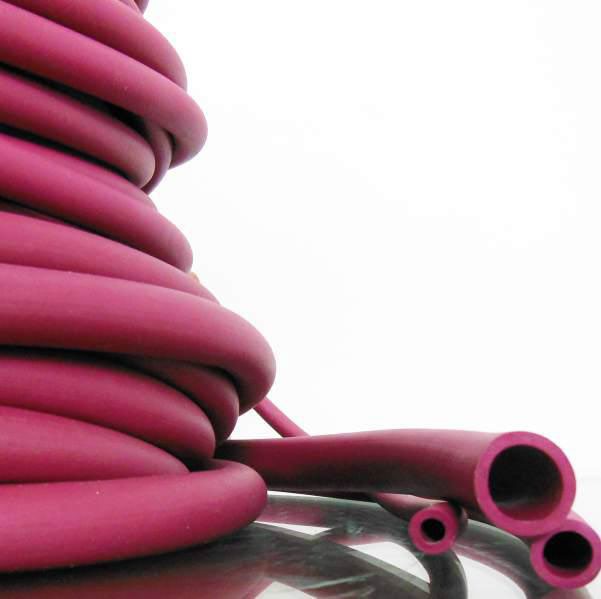Description
| Catalogue No. | Inner Diameter | Wall Thickness | Outer Diameter |
| (ID in MM) | (W in MM) | (OD in MM) | |
| 19802/1 | 3 | 1 | 5 |
| 19802/2 | 4 | 1 | 6 |
| 19802/3 | 5 | 1.5 | 8 |
| 19802/4 | 6 | 1.5 | 9 |
| 19802/5 | 7 | 1.5 | 10 |
| 19802/6 | 8 | 1.5 | 11 |
| 19802/7 | 9 | 2 | 13 |
| 19802/8 | 10 | 2 | 14 |
| 19802/9 | 12 | 2 | 16 |
| 19802/10 | 15 | 3 | 21 |
| 19802/11 | 16 | 3 | 22 |
| 19802/12 | 19 | 3 | 25 |
| 19802/13 | 20 | 3.5 | 27 |
| 19802/14 | 25 | 3.5 | 32 |
Natural rubber tubing is a type of tubing made from natural rubber, a polymer that is obtained from the sap of the Hevea brasiliensis tree. Natural rubber is known for its excellent elasticity, strength, and durability, making it a popular choice for a wide range of industrial and consumer applications.
Natural rubber tubing is commonly used in applications that require the transfer of liquids, gases, or air, and is particularly well-suited for applications where high flexibility and strength are important. Some examples of common applications for natural rubber tubing include laboratory and chemical processing equipment, fluid handling systems, and medical devices.
One of the key benefits of natural rubber tubing is its excellent resistance to abrasion and puncture, as well as its resistance to temperature and ozone degradation. Additionally, natural rubber tubing is also resistant to a wide range of chemicals, including acids, alkalis, and salts, making it an ideal choice for use in harsh environments.
Natural rubber tubing is available in a variety of sizes, wall thicknesses, and lengths, and can be custom fabricated to meet the specific needs of a particular application. It is typically sold in bulk quantities and can be easily cut to length and fitted with fittings as needed.





